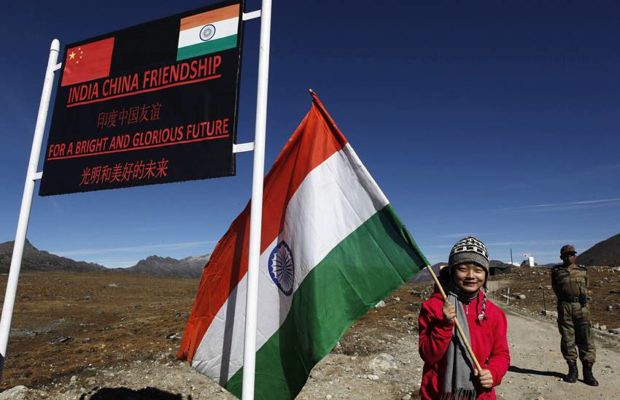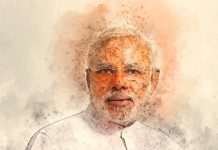On 1 April 1950, India turned into the first non-communist coalition nation to set up strategic relations with the People’s Republic of China. PM Nehru visited China in October 1954. While, the India-China outskirt struggle in 1962 was a genuine misfortune to ties, Prime Minister Rajiv Gandhi’s milestone visit in 1988 started a period of progress in respective relations.
India-China Relationship: Evolution
For a huge number of years, Tibet was the cradle that kept India and China topographically separated and settled. It is simply after China invaded and involved Tibet in 1950, the two nations are sharing a typical fringe.
The broad shared recorded experience was not there between the two countries and every nation had a helpless understanding of the mind and arrangement of the other.
Before the mid-twentieth century, India-China relations were minimal and confined to some exchange and trade of pioneers and researchers. Interactions started after India’s independence (1947) and the Communist revolution in China (1949).
Nehru’s perspectives supporting an independent Tibet offered ascend to Chinese question. Nehru acknowledged China’s suzerainty over Tibet yet needed Tibet to remain self-ruling.
Tibetan respect for India (where Buddhism originated) as their profound tutor and the blessed land was a worry for China.
China demonstrated no worry for McMohan Line (1914 Simla Convention marked between the British and the Tibetan representatives) which it said was forced by “radicals.”
Nehru and Zhou marked the Panchsheel bargain on 29 April 1954 to lay the guide for strength in a district (Hindi-Chini Bhai-Bhai) as India recognized Chinese standard in
Tibet: Mutual regard for one another’s regional integrity and power; Mutual non-hostility; Mutual non-interference; Equality and shared advantage; and, Peaceful conjunction.
As China fixed its grasp on Tibet, India offered shelter to the Dalai Lama (1959).
In 1962, China’s People’s Liberation Army invaded India in Ladakh, and over the McMahon Line in the then North-East Frontier Agency. After the contention, relations were in a freeze.
Executive Rajiv Gandhi’s milestone visit in 1988 started a period of progress in respective relations. India-China relations standardized through the normal trade of significant level visits.
Social Relations
India-China social trades go back to numerous hundreds of years and there is some proof that applied and linguistic trades existed in 1500-1000 B.C. between the Shang-Zhou civilisation and the old Vedic civilisation. During first, second and third hundreds of years A.D. a few Buddhist pioneers and researchers went to China on the noteworthy “silk course”. Kashyapa Matanga and Dharmaratna made the White Horse religious community at Luoyang their residence. Old Indian priest researchers, for example, Kumarajiva, Bodhidharma and Dharmakshema added to the spread of Buddhism in China. Likewise, Chinese explorers additionally embraced excursions to India, the most well known among them being Fa Xian and Xuan Zang.
Indian Bollywood films were famous in China in the 1960s and 1970s and the ubiquity is being rekindled as of late again. India and China have gone into a concession to co-creation of films, the first dependent on the life of the priest Xuan Zang hit the theaters in 2016. Yoga is becoming increasingly well known in China. China was one of the co-patrons to the UN goals designating June 21 as the International Day of Yoga.
Education Relations
India and China marked Education Exchange Program (EEP) in 2006, which is an umbrella understanding for educational collaboration between the two nations. Under this understanding, government grants are granted to 25 understudies, by the two sides, in perceived institutions of higher learning in one another’s nation. Aside from this; Chinese understudies are additionally yearly granted grants to examine Hindi at the Kendriya Hindi Sansthan, Agra to learn Hindi.
India-China Competition, Cooperation, Discord
India-China relationship is spotted with rivalry, collaboration, and strife. In 2017 these happened in India’s investigate of China’s Belt and Road Initiative (BRI), India’s entrance into the Shanghai Cooperation Organization (SCO), the emotional emergency in Doklam, the increasing speed of multilateral participation in the BRICS and endeavors to encourage financial commitment.
Reasons for Strain in the Relations
China’s situation on India’s Nuclear Suppliers Group (NSG) offer
Its incomprehensible remain on the listing of Masood Azhar under the U.N. Security Council’s 1267 Committee
Arrangement of Chinese military and engineering resources in Pakistan-involved Kashmir
Advancement of the China-Pakistan Economic Corridor (CPEC)
China’s case over the territory of Arunachal Pradesh and furthermore control of the Shaksgam Valley in Ladakh.
In what capacity can India and China fix their ties?
By establishing kinship and participation settlement
An unhindered commerce understanding (FTA) covering products and enterprises, cross-fringe investment, R&D, principles and question goals to help the reciprocal relations
Resolve the limit question dependent on exchanges held up until this point.
Both the nations must acknowledge and bolster each other’s provincial yearnings, be it OBOR or enrollment in NSG/UNSC.
Both must work near eliminate rising atomic reserve and expansion in the district to maintain strength
Individuals to individuals contact, tracing crafted by Chinese voyager Huen zang and the Indian partner Kashyap Matenga in connection with Buddhism.
Advancement of business and individuals focused network, and shared certainty building measures · Both nations need to show affectability and regard for one another’s center concerns and interests
What would india be able to do as a counter measure to CPEC?
India ought to investigate the improvement of availability among Tibet and India, particularly through the Sikkim division into Bengal.
Opening of ties among India and the Xinjiang locale of China is likewise worth examining.
Providing for air availability between Urumqi, the capital of Xinjiang province and New Delhi as one of the OBOR linkages
This would help in individuals to-individuals ties, exchange and business contact, and counter-psychological oppression participation among India and China.
Present Scenario






Well I definitely liked reading it. This article written by you is very useful for correct planning.
Amazing. I am very glad to see your post. Thank you a lot and I’m taking look forward to getting in touch with you. Will you please drop me an e-mail?
Thank you